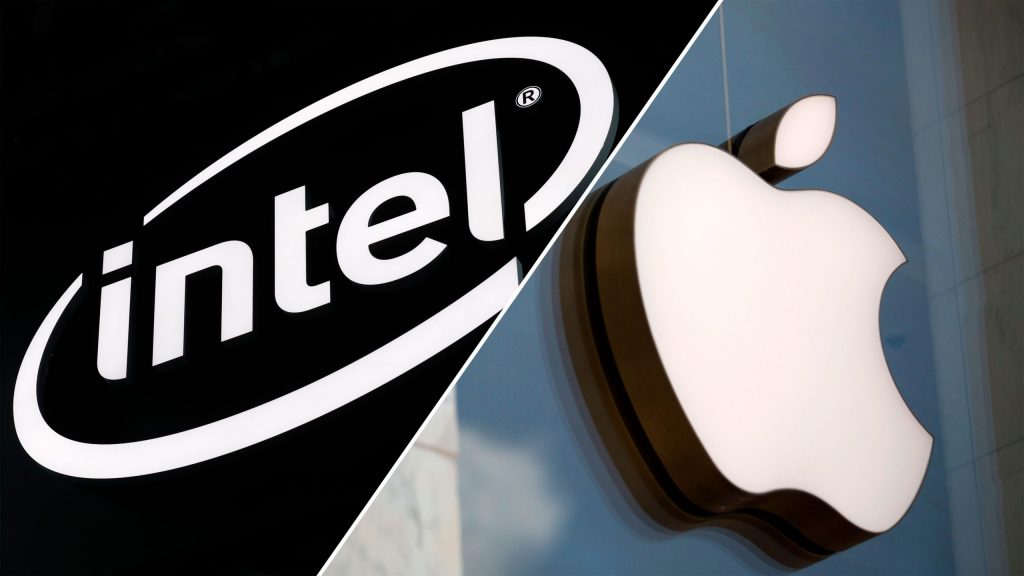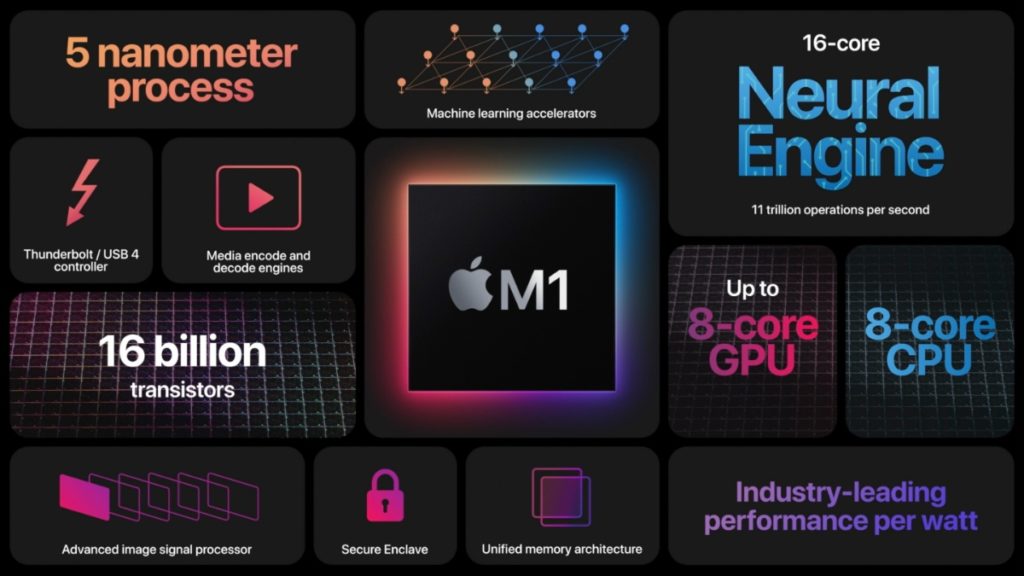
Oh boy… Well ain’t this a bit embarrassing. I know divorces of any kind can be messy, feelings are hurt and tensions fray, but most people try to not air their dirty laundry in public. Everybody and their mother at this point has heard about Apple’s split from longtime CPU supplier Intel, moving to their own in house ARM based Apple Silicon processor technology. Some have marveled at how smooth the transition so far has been. Some are pondering if this will be the moment the computing industry goes all in on ARM and ditches x86 altogether. Intel, feeling ever insecure about it’s very viability, went on the offensive and… well… the stink of desperation is evident.

First thing, I don’t hate Intel at all. My very first PC was a Dell Dimension 2400 and the big thing that mattered to 11 year old me was getting a “Pentium 4” processor. I had totally bought into the marketing. The magic of having the new Netburst architecture (and all the mid 2000’s multimedia hype that went along with it) was tantalising and despite it’s shortcomings, served me well. My first laptop was an Inspiron 1300 with a Dothan Celeron M that gave me the first taste of gaming on the go, with all the “metered expectations of fun” that GMA900 graphics would allow. My first Mac was a 2008 White Macbook (still works) which was the fruit of Apple’s at the time very recent transition to Intel Processors from PowerPC with a spiffy 2.4GHz Core 2 Duo Penryn T8300.

Intel introduced me to computers, to gaming, to browsing the internet, to chatting with friends online, to ripping CD’s and to the world of HD Video with my trusty “Dual-Core Do More!” Macbook (old Intel marketing slogan there for ya!). My childhood was powered by Intel, my career exists because of Intel. One of my passions and joys in life wouldn’t exist without this one company in Santa Clara. For that I do owe it a thanks. That history is what makes current Intel today so infuriating. They can do better and be better.

Anyone that has a Mac knows it’s not a gaming platform. Macs are used by creative professionals mixing beats in Logic Pro, photographers doing touch ups and colour grading in Photoshop or Lightroom. They’re used for productivity by businesses and individuals all over the world, where battery life and snappy performance is key to a good workflow. Gaming on Mac is the most niche of all niches, comparing on this front is sly at best, downright misleading at worst. The graph above has been derided as having cherry picked samples to make Intel look good, not even mentioning if Apple’s chip is performing more work by running in Rosetta 2 emulation vs native.

Who says you can’t launch a rocket with a Mac, or play Rocket League on it if you really wanted to? Intel it seems. Onto the next hit piece…

Criticizing Apple’s lack of touch screen integration in their to-date laptop offerings, ignoring the fact that Apple’s iPads will curbstomp an Intel laptop for Tablet work any day of the week. Probably not the best comparison to make. Also the marketing line of “only PC offers a tablet mode, touch screen and stylus capabilities in a single device” claim should really come clean about just how few PCs actually incorporate all these features, I could count on one hand how many have all three and even fewer that actually implement these well. Also… AMD exist? You don’t need Intel for a good PC.

This on the face of it doesn’t seem so bad on it’s own, but consider Intel’s history, it’s rap on the knuckles for anti-competitive behaviour, the backroom deals with OEMs to squeeze AMD out, and it paints a company that would rather deceive with dodgy deals and misleading marketing than delight consumers by letting it’s product do the talking.
- Intel provided monetary incentives in the form of hidden rebates to Acer, Dell & HP on condition that they bought all, or almost all, their x86 CPUs from Intel for three years and none or, almost none, from AMD.
- Intel provided hidden rebates to Lenovo on condition that it purchases its CPU needs for its notebook computers exclusively from Intel.
- Intel made direct payments to a major retailer on condition it stocked only computers with its CPUs
- Intel paid computer manufacturers to halt or delay the launch of AMD hardware, including Dell, Acer, Lenovo, and NEC.

It’s not the first time Intel have gone this way with their marketing. Vague, cherry picked, sometimes completely unbalanced comparison systems or outright unproven claims aren’t uncommon with Intel press releases. There was an Intel press event last September where they spent more of their time mentioning AMD products than their own, completely transfixed with their competitor and failing to even give cursory mentions to their own products. Gamer’s Nexus’s Steve Burke had some hilarious coverage on the subject, so to say that Intel’s ego is a bit fractured right now is probably an understatement.
Gamers Nexus:Intel Won’t Stop Talking About AMD: New Tiger Lake CPU Specs & 11th Gen “Benchmarks”

Apple themselves are no stranger to talking up their own products at the expense of their opposition, but they rarely go so far to malign the competition entirely and mostly focus on their pros rather than the other’s cons. The Intel of late seems fixated on attacking Apple, attacking AMD and anyone that threatens their established standing in the industry. While others have embraced TSMC’s 7nm Process Node, a stubborn Intel who until recently has refused to consider outsourcing fabrication has been stuck on it’s 10nm node, and for many of it’s product line, it’s positively geriatric 14nm node, a magnet of much ridicule. Intel’s roadmap has been stuck in the mud for many years now, and Apple got tired being held back.

While Intel powered Macbooks had horrendous thermals (and thermal throttling to boot), the new M1 Air doesn’t even need a fan. The M1 Pro has one that spins at a leisurely pace to enable long term frequency boosting, but that’s it. No more char-grilled legs and pitiful battery life while the heat of Arizona gets exhausted out the back. For many, it means a quiet, snappy, blazing fast laptop that has incredible stamina, all with very little downside to most Mac users. The performance per watt, a term Apple was fixated about back during the PowerPC -> Intel transition over a decade ago is monumentally better on Apple Silicon than it is with the previous Ice Lake Intel chips.

Apple left IBM’s PowerPC platform for the same reason it’s leaving Intel right now. To, in their eyes, make the best products they can. Intel shouldn’t be taking this breakup personally, it’s just business. At the end of the day this decision is best for Apple and ultimately the consumer who buys their Macs. Intel should take this as a wake-up call. Stop dismissing AMD, ARM and everyone else as beneath you. The era of Intel as the only premium CPU vendor, AMD being for poor people and ARM being for just phones is over. Apple Silicon could very well be the trojan horse that finally moves the industry to RISC. Intel seem worried, very worried, and the desperation is noticeable. The industry can smell blood, and it’s up to Intel to fold or fly.

Microsoft already have Qualcomm CPUs in their Surface X and have tried repeatedly to make Windows for ARM catch on (Windows RT anyone?). Apple have a habit of being late to the technological advancement party, implementing a given technology really well and being credited with “inventing it”. They didn’t make the first smartphone, but undoubtedly made the first one that made anyone take notice.

Apple being Apple always prefers to have holistic approach to it’s designs and the more it can bring in house the better. Apple likes control. It had a great relationship with Intel, their collaboration spawned many a Mac that powered the 2010s for millions, however nothing beats in house so there was always going to be a desire to move to their own silicon. However, this was hastened by Intel dropping the ball, breaking their own promises with it’s roadmap and failing to keep pace with the industry. Intel’s woes are nobody’s fault but Intel’s, it’s time they stopped throwing stones and started building themselves up and becoming competitive again.

They got comfortable. AMD came up unexpectedly, overtaking them in market share for the first time in 15 years back in January. That doesn’t happen by accident. AMD have a thimble worth of resources and money compared to Intel. AMD listened to it’s customers and it’s engineers, Intel didn’t, and they’re paying the price. I love me an underdog. I supported AMD during the bad days of Piledriver. This very article is being typed up on my venerable self built PC rocking an FX-9590 even! Back then I couldn’t recommend anyone buy AMD over Intel, AMD weren’t competitive. Right now Intel isn’t, it needs to talk up it’s strengths and focus on those areas where it’s products make sense until it catches up. These underhand tactics are undignified for a company with such a place in tech history.
